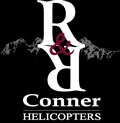Bell Model 204
Bell Helicopters was awarded the contract for a new US Army "medevac" helicopter on February 23rd 1955. Bell designed the model 204 which was called the "XH-40" by the military and then changed to HU-1 Iroquois; the HU stood for Helicopter, Utility, quickly leading to the nick name “Hueyâ€. HU was later changed to UH however, “Huey†remained the famous name for this helicopter both in and out of the service. Civilian Models of the helicopter are designated by the number, ex: 204, 205 etc, and any military models of the huey are designated as the UH model (ex: UH-1B, UH-1H, etc). All UH identified helicopters were ordered for, and or served in one of the branches of the military.
The 204 was Bell's first production turbine helicopter.
Model UH-1A
The first model of the 204 Huey was delivered to the Army on June 30, 1959 and a total of 183 were built, completing orders in 1961.
The UH-1A was deployed to Vietnam and a number of them were field-fitted with machine guns on a fixed mount next to each side door and were armed with a total of 16 rockets.
Model UH-1B
The Army requested several specific improvements to the Huey, UH-1A and the result was a "UH-1B", produced in March 1961. The UH-1B had a stretched fuselage to provide accommodations for seven passengers; three stretchers, two sitting casualties, and a medical attendant; or 3,000 pounds of cargo.
Bell sold a commercial version of this variant called the "Model 204B.†The Model 204B was completed in September 1960 and certified in April 1963. The Navy also operated hand-me-down Army UH-1B gunships in Vietnam, in support of river patrol boats. The gunships would scout ahead of the patrol boats to look for ambushes and back up the boats during an attack. Various Huey models were also operated by "Air America", a front company operated by the US Central Intelligence Agency.
1,033 UH-1Bs and Model 204s were built in all.
The UH-1B saw extensive use in Vietnam, mostly as a gunship. Transport versions of the UH-1 were known as "Slicks" because of their uncluttered appearance. They were generally armed with M-60 machine guns on a flexible mount in each door to provide covering fire for troops.
The use of dedicated helicopter gunships to escort "Slicks" or "DustOffs" (as medevac Huey’s were known) led to a demonstrable drop in combat damage. In fact, although some believed that helicopters were too fragile to engage in direct combat operations, Huey loss rates were found to be surprisingly acceptable.
The undoubted success of the bell UH-1B gave convincing proof that there was little wrong with the basic design of this utility helicopter.
Model HH-1K, TH-1L, UH-1L
Bell designed another variant of the UH-1B for Search and Rescue Duties for the US Navy, called the "HH-1K". The US navy ordered 27 of the HH-1K’s in 1970. These rotorcraft were fitted with a Lycoming engine with 1,400 horsepower and had Navy-specified avionics. 90 more were built as training helicopters under the designation "TH-1L Seawolf", and eight were built as "UH-1L" utility rotorcraft.
Model UH-1C
The UH-1C was introduced in September 1965, but only about 750 were built, as by that time Bell was getting ready to introduce the AH-1 "Huey Cobra" gunship, which was based on the technology of the UH-1B, and though it lacked some of the great features of the UH-1B, it was able to perform the duties of the gunship which it was intended.
Model UH-1E
In March 1962, Bell won a Marine Corps contract to supply the service with an assault support helicopter, resulting in the "UH-1E". The first flight of the UH-1E was in February 1963 and deliveries began in February 1964. The Marines obtained 250 UH-1Es, similar to the UH-1B but included an external rescue hoist and a rotor brake to keep the rotor in place during shipboard stowage. The Marines also obtained 20 "TH-1E" trainers.
Model UH-1F
In June 1963, Bell won a US Air Force contract for a helicopter to perform missile site support duties, resulting in the "UH-1F", a derivative of the UH-1B. The UH-1F had an even wider, 48 foot diameter rotor and a turboshaft engine with 1,290 horsepower. The first UH-1F flew on February 20th 1964, and deliveries to the Air Force began in September 1964. A total of 119 UH-1F models were ever built.
A number of UH-1F were converted to "UH-1P" psychological warfare rotorcraft, carrying loudspeakers over the jungles of Vietnam to call on the enemy to surrender.
A few "TH-1Fs" were also built for instrument flying and hoist training.
Model 530
Bell was awarded a contract to modify a helicopter to study Aerodynamics of the rotorcraft. The famous modifications were performed on a B Model Huey and was called the "Model 533". It was modified to a number of configurations as part of a US Army program. The first series of modifications was flown in 1962. Some of those features included aerodynamic fairings, a new tail surface to offload the tail rotor, and a tilting rotor mast inside a large fairing structure.
The Model 533 was then fitted with a swept wing, two Continental J69-T-29 turbojets with 1,700 pounds of thrust each, and a modified rotor blade with swept tips. This compound rotorcraft achieved a speed record of 236 MPH or 200 knots in level flight on October 15, 1964, and on April 6, 1965 it topped that record with a speed of 250 MPH in level flight.
The Model 533 was finally fitted with two wingtip-mounted Pratt & Whitney JT12A-3 turbojets with 3,300 pounds thrust each. In this configuration, it achieved speeds of over 300 MPH.
